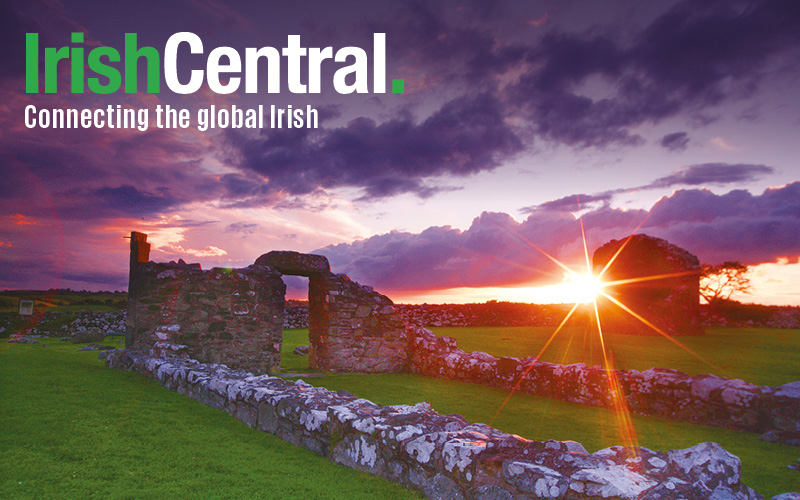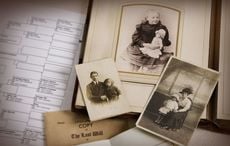“We must honor their pain.” I once heard author Pete Hamill say that of our ancestors’ sufferings. “Honor their pain.” I’ve never forgotten that.
My grandmother Florence Gorman gave birth to five daughters, but within a few hours of the middle child’s birth my grandparents were shocked by what they saw: Their baby’s wraps were soaked in blood.
My grandfather Allie called for the doctor who’d delivered the baby, but it was too late. He pronounced the baby dead. He was, however, vague as to the cause of her death. The undertaker wasn’t. “The baby’s umbilical cord was cut too short,” he said.
My grandfather walked from the family’s Brooklyn apartment on Atlantic Avenue to nearby St. Rita’s Roman Catholic Church to arrange the baby’s funeral service. Allie told the priest that he had baptized the child. He knew that a priest ministered the sacrament of baptism, but he also knew that a layperson, in case of necessity, could minister the sacrament provided he or she observed the form used by the church.
When asked whether the child had been dead or alive at the moment he administered the sacrament, Allie was uncertain. The priest explained that if Allie wasn’t certain, a Catholic funeral service wasn’t possible. Embodied with a hereditary stain, Original Sin, which could no longer be cleansed from her soul, my grandparents’ baby was denied a Catholic burial. Allie and Florence’s seven-hour-old daughter could not be laid to rest in consecrated ground.
How much meaning can a flicker of life have? How much can one reflect or write about a seven-hour-old baby? At first, my mother’s sister seemed to me not so much flesh and blood as a genealogical footnote. I had never given the baby’s death much thought; I didn’t know her name nor, as I learned, did anyone else. But one night, while viewing a family interment list, I called my mother and asked did she know her sister’s name and where she was buried? My mother said she didn’t know the baby’s name and the only thing she knew about the baby’s burial was that she wasn’t with her mother and father at St. John’s Cemetery in Middle Village, Queens.
I began a search in New York City’s Municipal Archives and learned that the baby was named after her mother, my grandmother Florence, and had died at 6:00 A.M., on October 1, 1925. She was buried at Mount Olivet, a nonsectarian cemetery in Maspeth, Queens, a few miles from her parents' grave. I planned a trip to the cemetery to see if I could locate the baby’s burial site.
Mount Olivet is New York two hundred years ago. The bucolic nature of the rolling terrain and stately maple trees that line the narrow roadways of the cemetery belie its location in an industrial section of Queens, a few miles from Manhattan. I drove through the main gate and entered the cemetery’s office where a clerk sifted through the old burial records. She located Florence’s name. She was buried at Hillside 4A.
A staff member drove me over hills that afford sweeping views of the New York skyline, but the terrain changed as we neared a distant section of the cemetery. “She’s over there,” he said. “That was a section reserved for stillborns, babies who died shortly after birth and the unbaptized.”
Florence was buried in an unmarked grave, on a hill, along a fence, proscribed for eternity for sins neither she nor her mother nor father had committed.
How, I wondered, could my grandparents ever attend a Catholic service again?
“Your grandmother didn’t,” my mother said, “Except for weddings and first communions. Your grandmother once said, ‘They can bury gangsters in a Catholic cemetery, but they can’t bury a little baby because of some rule?’” On September 10, 1931, Salvatore Maranzano, the boss of the New York Mafia, was shot and stabbed on orders of Lucky Luciano. Maranzano is buried at St. John’s Cemetery, a few yards from my grandparents.
I questioned my mother about her father and the Church. “He kept going to Sunday Mass, didn’t he?” I asked.
“No, not much,” my mother said.
That was not my impression. I recall staying at my grandparents’ house when I was a child. My grandfather and I would get up at the crack of dawn on Sunday mornings and attend church together. “Maybe I created my own myth but I believed that Church was my grandfather’s Sunday morning ritual,” I said to my mother.
“It was probably a ritual,” she said, “but only when his grandchildren were with him. I don’t know what his motivation was. Maybe he felt he’d be shirking his responsibilities if he didn’t spend time practicing his religion with his grandchildren. Despite what had happened, I guess his ties to the Church were deep-rooted.”
I couldn’t imagine how or why my grandfather, a man who wouldn’t condone the mildest familial slight, would acquiesce in this matter? But I learned that my grandfather, a compassionate and caring man, the son of an Irish immigrant, was dealing with a force he probably never considered.
For hundreds of years the British controlled Ireland. Their rule was harsh and intended to eliminate the Catholic clergy and curtail Catholic worship. But in many ways their rule and the Penal laws strengthened Irish resolve, reinforcing the ties between Irish-Catholics and the Vatican. Although the Church was a source of refuge, the theology of Original Sin exerted its grasp on Ireland’s people. Catholics were taught that when Adam and Eve ate the forbidden fruit their sin caused them to lose their innocence. The stain of Original Sin could only be removed by the Sacrament of Baptism — without it, the chance of entering heaven, they were told, was nonexistent.
Between 1845 and 1851, the Famine Irish began arriving in New York City. Bishop John Hughes, an Irish immigrant, recognized their spiritual needs and began ordering the building of churches, the first, St. Brigid, located on Manhattan’s Lower East Side, was completed in 1849. St. Patrick’s and many more followed. The church provided community, values and ethnic identity, but there was a tradeoff — the Church kept the rigid rules and the strict theology of Original Sin. And the priests, as they had in Ireland, retained their status and importance.
What must my grandparents have felt when the parish priest denied their baby a Catholic funeral service and interment in her family’s burial site? Could I reverse this injustice? I asked myself, how could I confer meaning and dignity to Florence’s life?
I drove to my grandparents’ grave at St. John’s Cemetery in Queens and looked at the headstone. Florence’s name could be etched into the stone, I thought, just beneath her parents’ names. I inquired about adding Florence’s name to the headstone. I was informed that in order to add an inscription I had to prove that a familial relationship existed between my grandmother, my mother and me, which I did. I visited a monument company located across the street from the cemetery’s entrance and arranged for Florence’s name to be etched on my grandparents’ gravestone. The work would be completed in a month.
Five weeks after I met with the stonecutters I received a call. Florence’s name had been carved into the stone. I returned to Mount Olivet and made my way to the site where Florence was buried. Crouching, I scooped up some moist dirt and poured it into a plastic bag. I thought of St. Augustine, a Catholic scholar and theologian who said, “Even if there were men in nothing but original sin, it would be sufficient for their condemnation….” Original sin and the unquestioned word of a priest had held sway over my grandfather in a way that I never would have imagined possible.
I left Mount Olivet and drove to St. John’s. I walked to the spot where my grandparents were buried. I leaned over and touched Florence’s name, now etched in stone beneath her parents’ names.
As I sprinkled the dirt over the grave I thought, “Grandma and Grandpa, I’ve returned Florence to you. I love you both. I tried my best to honor your pain. I did the best I could.”
---
Charles R. Hale was born, raised and educated in New York. He is a former partner of a NYC based consulting firm Hale, Borenstein Ltd. Charles, along with Niamh Hyland, is a cofounder of Artists Without Walls an organization purposed to inspire, uplift and unite people and communities of diverse cultures through the pursuit of artistic achievement. His film “Walls: We Are Not Forgotten,” about the life of singer Judy Collins, was presented at the 2012 Eugene O’Neill Award ceremony honoring Ms. Collins. In 2013 the City University of New York honored Charles for ”Outstanding Service to New York and Irish America.”
* Originally published in 2014.




Comments